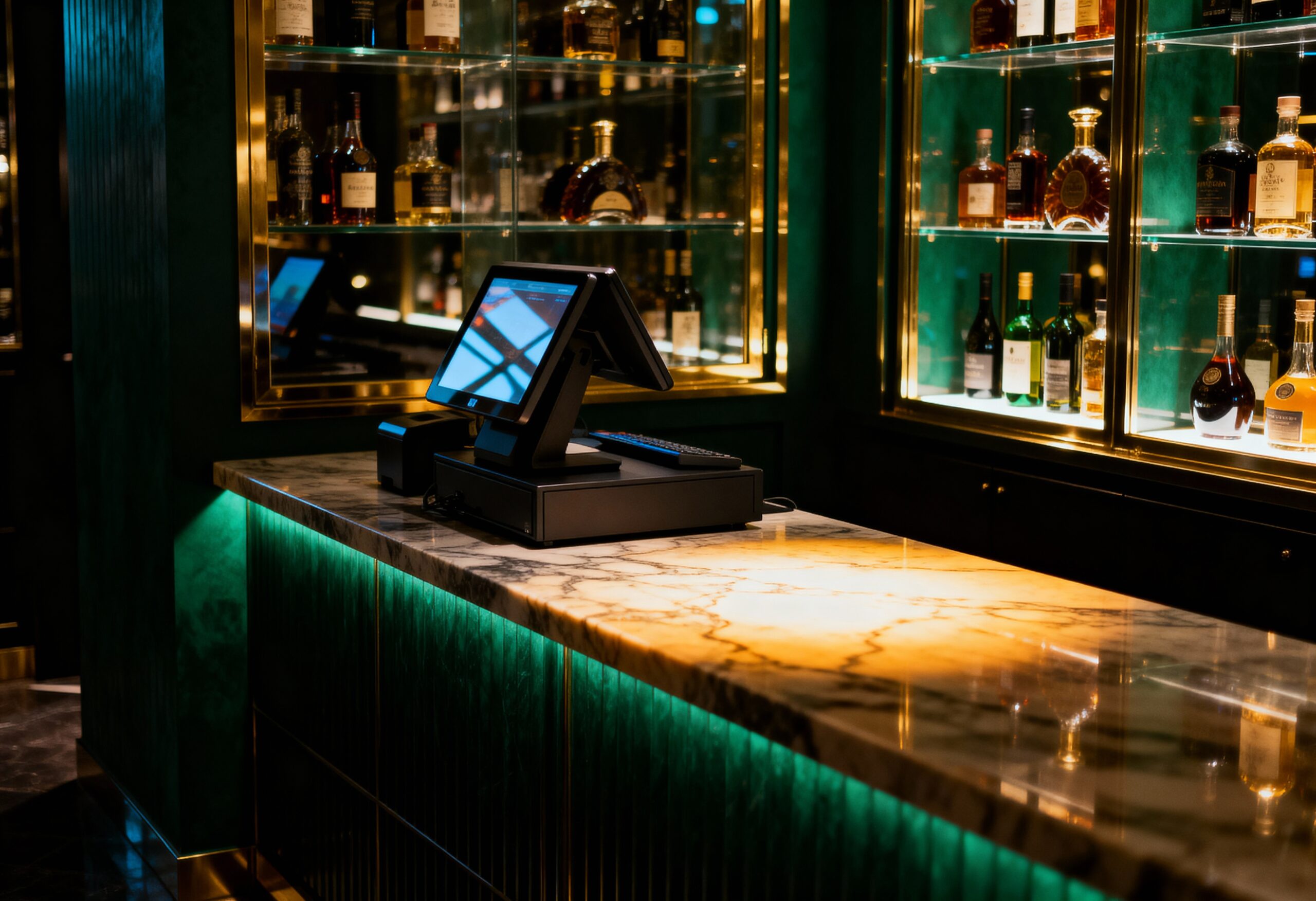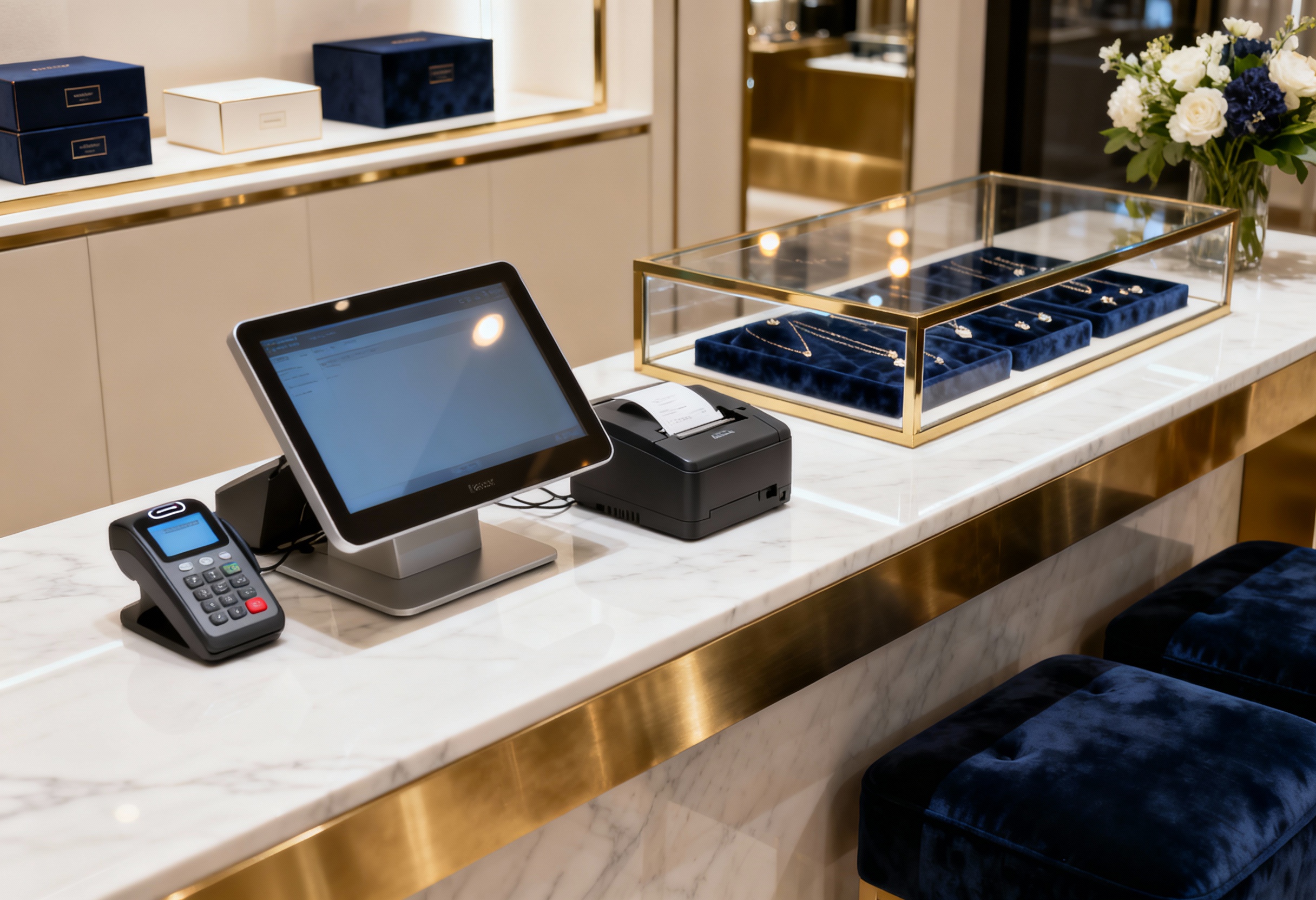Luxury retail operates on precision, perception, and personalization; each transaction is part of a larger narrative that defines the brand’s stature. In this environment, technology must align with the art of service, not overshadow it. The Point of Sale (POS) system becomes the bridge between client experience, brand philosophy, and operational excellence.
This article from ConnectPOS advises luxury retailers on what to consider when choosing a high-end retail point of sale system, how to evaluate the right vendor, and how technology can elevate both in-store and digital experiences while maintaining the elegance that defines premium brands.
Highlights:
- A modern POS in luxury retail reflects the brand’s identity, supports personalization, and upholds the exclusivity clients expect.
- Choosing the right system means prioritizing omnichannel integration, real-time inventory insight, clienteling, and data security to sustain precision and trust.
The Role of a POS System in High-End Retail
In high-end retail, each transaction represents the final moment of a curated experience that mirrors the brand’s identity. A refined POS system anchors that experience, aligning every detail from client recognition to payment under a consistent and personal standard.
A McKinsey report shows that luxury brands integrating analytics into planning achieved online sales growth of 30–50% and reduced inventory costs by up to 15%. This link between data and personalization illustrates how technology strengthens the art of exclusivity.
Luxury shoppers value precision and discretion. A thoughtful POS gives associates access to client histories and preferences, allowing them to continue relationships across online channels, boutiques, and private sessions. This continuity builds trust and long-term loyalty.
Behind the counter, the POS acts as a control hub for inventory, pricing, and team coordination. In luxury settings where exclusivity matters, real-time synchronization between stores and online channels prevents errors and reinforces consistency.
At a strategic level, the POS becomes a data source that reveals trends in demand and customer behavior. CBRE reports a 56% rise in data scientist hires across luxury retail since 2019, showing how brands use POS insights to refine assortments and elevate service. For these retailers, its value lies not in automation but in refinement – empowering human expertise through precise, informed interaction.
Core Features to Look for in a High-End Retail Point Of Sale System
A high-end retail POS system serves as both the operational backbone and the experiential bridge between brand and buyer. Its design should reflect the same level of refinement expected in luxury service, such as precise, adaptive, and deeply informed by data. Beyond recording sales, the system connects channels, informs associates, and protects sensitive client information, forming the foundation for a consistent and elevated customer journey.
Key features that define a high-end retail POS system:
- Omnichannel integration: The system connects physical boutiques, pop-ups, and online storefronts within a single ecosystem. Sales, returns, and client interactions flow across channels without friction, giving staff a unified view of customer activity and brand performance.
- Clienteling and personalized service: A refined POS supports clienteling through access to individual profiles, purchase history, and preferences. Sales associates can tailor recommendations, prepare for client visits, and maintain continuity between digital and in-person interactions, turning transactions into lasting relationships.
- Real-time global inventory visibility: Luxury retail demands precision in availability. The POS should synchronize stock across regions and warehouses, showing what is available and where it resides. This transparency prevents lost sales and reinforces customer confidence.
- Performance and experience analytics: The system should translate data into insight, tracking product demand, associate productivity, and regional trends. Such analytics allow managers to refine assortments, service models, and visual merchandising strategies with clarity.
- High-level security and privacy: In a market built on trust, protection of customer and transaction data is non-negotiable. The POS must meet global compliance standards, manage encrypted transactions, and maintain strict access control to safeguard brand integrity.
- Integrated CRM and loyalty ecosystem: The most valuable relationships are built on recognition and reward. A POS connected with CRM tools allows brands to record preferences, manage loyalty programs, and personalize communications, ensuring every client feels acknowledged and valued.
How to Evaluate and Select the Right High-End Retail Point Of Sale System for Your Brand?
The global luxury goods market reached USD 390.17 billion in 2024 and is expected to climb to USD 579.26 billion by 2030, reflecting a 6.8% CAGR between 2025 and 2030. As this growth unfolds, luxury retail continues to move toward experience-led commerce, where personalization and consistent brand expression take precedence over convenience.
►►► Optimal solution set for businesses: Multi store POS, Next-gen POS, Inventory Management Software (MSI), Self Service, Automation, Backorders

Within this environment, a POS system becomes far more than a transaction tool—it represents the brand’s precision, heritage, and service philosophy. Selecting the right solution requires examining how well the technology aligns with exclusivity and emotional connection, while remaining flexible enough to support expansion across markets and new retail models.
Identify Your Brand’s Operational Needs
High-end retail depends on precision at every level, such as client interaction, inventory movement, pricing accuracy, and staff coordination. The POS should reflect these realities rather than impose a generic workflow.
A flagship boutique, for instance, may prioritize appointment-based selling and in-depth clienteling, while a global retail chain might focus on regional coordination and cross-store visibility. Mapping these priorities clarifies which functions hold value and which remain secondary.
Defining operational needs also involves recognizing the pain points that currently limit performance. If staff members spend time reconciling sales data across regions, or if client information remains fragmented between systems, these issues guide what the POS must resolve. The aim is to identify where technology can create clarity, consistency, and better decision-making. Each requirement becomes part of a blueprint for selecting a system that aligns with real business practice rather than theoretical features.
Key Evaluation Criteria for High-End Retail POS Systems
Beyond transaction processing, the system must support complex pricing structures, multiple currencies, and client recognition across regions. The interface should facilitate intuitive use for associates without sacrificing analytical depth for managers. True value emerges when technology complements the brand’s method of service, quietly supporting accuracy and discretion without disrupting the client experience.
Vendor transparency and technical resilience are equally decisive. The POS should connect smoothly with inventory, CRM, and ecommerce systems while maintaining data consistency across every location.
Speed, reliability, and long-term scalability matter more than aesthetic dashboards. When comparing options, retailers should request real-world demonstrations using their own operational data to judge how each system responds under authentic conditions.
Assess Vendor Credibility and Integration Capabilities
Selecting a vendor in luxury retail calls for a partnership grounded in trust, transparency, and shared understanding of brand standards. The vendor’s history, client base, and technical support record reveal how well it adapts to specialized retail needs. References from similar brands often provide the clearest picture of reliability.
The focus should remain on long-term reliability, ensuring the system and the vendor can grow and adapt as the brand enters new markets or develops new retail formats.
Integration capability determines how the POS coexists with existing digital infrastructure. It must align with ecommerce POS platforms, CRM systems, ERP solutions, and analytics tools without compromising data integrity. A system that communicates clearly with others prevents fragmentation and improves operational awareness.
This coherence between platforms allows leadership to act on unified data rather than scattered reports. The strongest vendor relationships are those built on adaptability and shared commitment to precision, the qualities that mirror luxury retail itself.
ConnectPOS: A Comprehensive POS Solution for Luxury Retail
Luxury retail demands more than operational accuracy; it requires systems that preserve brand integrity while supporting elevated service standards. ConnectPOS achieves this balance by linking client relationships, in-store rituals, and global inventory movement into one unified experience. It allows luxury retailers to manage exclusivity and scale at the same time, where every sale feels personal and every process remains precise.
Built for brands that treat retail as an experience rather than a transaction, ConnectPOS combines data, personalization, and inventory control within one connected structure. It forms the foundation for client recognition, real-time product visibility, and strategic decision-making across boutiques, regions, and digital touchpoints.
Key Strengths of ConnectPOS for Luxury Retail
- Unified Client Intelligence: Every interaction, online or in-store, contributes to a shared client profile. Sales associates can access preferences, purchase history, and service notes immediately, enabling conversations that feel natural and consistent with the brand’s tone.
- Global Inventory Transparency: ConnectPOS synchronizes stock across all boutiques and warehouses, giving real-time insight into product movement. Limited collections, custom orders, and regional exclusives remain traceable without disrupting availability or exclusivity.
- Personalized Checkout Experience: The platform reflects each brand’s service style. It supports private invoicing, exclusive payment options, and pre-orders while maintaining transaction accuracy for premium purchases.
- Integration with Digital Ecosystems: ConnectPOS links smoothly with CRM, loyalty, and ecommerce platforms, allowing data to move freely across all client touchpoints. This integration helps brands refine merchandising and service delivery through measurable insight.
- Security and Confidentiality: Protecting client privacy remains central to ConnectPOS. The system maintains high standards of data protection, ensuring every interaction meets the discretion expected by high-net-worth customers.
- Scalability Across Regions: As brands expand into new markets or introduce new retail concepts, ConnectPOS adapts without disrupting established operations. It supports both heritage maisons and emerging labels aiming for growth while preserving identity.
- Loyalty and Relationship Continuity: ConnectPOS strengthens long-term client relationships through intelligent loyalty management. It recognizes returning customers across all channels, tracks their engagement history, and supports tailored rewards or private benefits aligned with the brand’s tiered service philosophy. T
ConnectPOS shifts luxury POS retail from transactional management to relationship orchestration. It provides clarity, consistency, and discretion, enabling every brand to deliver experiences that reflect prestige and purpose at every point of contact.
FAQs: High-end Retail Point of sale System
How does a High-end retail point of sale system improve customer relationships?
It keeps a detailed record of each client’s purchase history, preferences, and communication notes. This allows associates to anticipate expectations and continue meaningful interactions long after a visit, strengthening long-term loyalty.
What features should luxury retailers prioritize when selecting a POS?
Real-time inventory accuracy across regions, support for multi-currency transactions, integration with CRM and loyalty ecosystems, and detailed reporting on buying patterns.
These capabilities support the consistency and transparency that define luxury retail operations.
How does a POS system protect the privacy of luxury clients?
High-end customers expect discretion in every transaction. A suitable POS must handle encrypted payments, safeguard personal details, and comply with strict data protection laws. Privacy is treated as part of the brand promise, not a technical requirement.
Conclusion
Choosing a POS system for high-end retail is a strategic decision that influences every touchpoint from personalized service to inventory transparency and long-term client relationships. The right platform integrates brand values with data-driven precision, transforming retail operations into an extension of the luxury experience itself.
ConnectPOS delivers this balance. Built for the standards of high-end commerce, it connects people, products, and performance into one unified structure that strengthens brand identity and operational control. To discover how ConnectPOS can help your brand refine its retail experience, contact us and explore solutions designed for the world’s most discerning retailers.
►►► Optimal solution set for businesses: Shopify POS, Magento POS, BigCommerce POS, WooCommerce POS, NetSuite POS, E-Commerce POS



